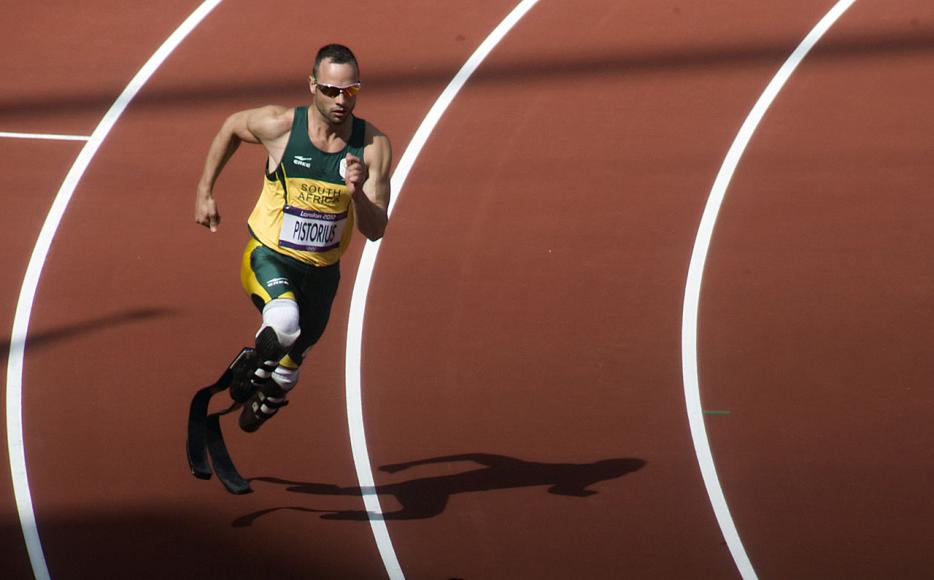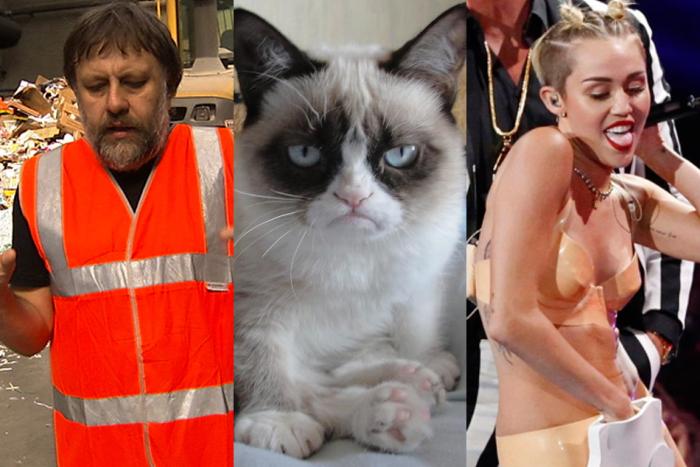Reverse fairytale: Valentine’s Day, 2013. While sitting on the toilet after a romantic evening, a beautiful young woman named Reeva Steenkamp was shot to death by her handsome boyfriend, the Paralympian track star Oscar Pistorius. In his murder trial, currently unfolding in a Pretoria courtroom, the judge will want to know why, not if, Oscar killed his paramour. He will explain that he was under a hypnogogic fog in the dark of his bedroom, and mistook his beloved for a violent intruder, emptying half a magazine into the bathroom door behind which she cowered. The prosecutors will insist that Oscar is an entitled celebrity and a violent man with a history of bad behaviour, and his fusillade was aimed at Reeva in all her bountiful blondness, and not at some imaginary bogyman.
In stating their case, the prosecutors will be forced to acknowledge that South Africa is a violent country, in which violent intruders occasionally infiltrate even the up-market, high-security compounds in which Oscar unquestionably killed Reeva. These intrusions are the baseline fear not only of South Africa’s economically blessed white minority, and not only of the country’s increasingly wealthy black middle class (whatever “middle class” means in the South African context), but also of poorest of shack dwellers, who don’t have mercenaries patrolling their neighbourhoods in armoured pick-up trucks, trained to counter any home invasion with violence at least as extreme.
In the South African imagination, that small creak in the dead of night is never the house settling, or an ibis shifting its sleeping position on the roof—it is Armageddon wearing a balaclava. This writer knows not one, but two individuals who have shot an intruder to death. Those were face-to-face encounters at close range—the first in an office, the second in a hallway. In the latter case, the shooter experienced his first PTSD symptoms while watching an episode of The Simpsons. Such stories are the fuel for the country’s unending paranoia.
Which is all to say that Oscar Pistorius shot Reeva Steenkamp inside the place most South Africans feel paradoxically safest and most vulnerable—their homes. But Oscar Pistorius is not most South Africans. The Nike-emblazoned Blade Runner was a symbol of human resilience in the face of horrible odds, and an example of technology’s democratizing possibilities. A double amputee because of a birth defect, and an Olympian because of hard work and determination, Oscar on his carbon-fibre blades was one of South Africa’s last untainted symbols.
Something very South African lies at the heart of his tainting: because of the country’s historical context, the intruder Oscar insists he believed he was shooting was racially profiled before he entered the home. He was a black man, and bore along with his commercial intent a host of grievances that can only be redressed by violence. There is a subtext running through the story Oscar will tell a packed courtroom, an undercurrent of meaning that white South Africans understand only too well—in his eagerness to avoid being a palimpsest for the country’s ancient racial enmities, Oscar pulled the trigger first, and often. If he happened to kill his girlfriend in the process, that was tragedy that will repeat itself until such time as the government deals with the obscene rates of violent crime in the country. Understood this way, Reeva Steenkamp is a victim of black on white violence. That she happened to be a white woman killed by a white man doesn’t diminish this line of defense; in fact, it only widens the scope of the tragedy. Not one, but two lives have been destroyed because the government has failed to halt the slaughter of whites in post-apartheid South Africa. Simply, Steenkamp was killed by systemic reverse racism.
Not guilty on all counts.
There is a major bullshit factor to this argument: the genocide of whites that provides Oscar’s defense with its scaffolding does not exist. From the dawn of democracy in 1994 until 2012, there have been 6,498 white South African homicide victims, a figure that represents 1.8 percent of all murders committed in South Africa during that period (although 8.85 percent of the population is white). Roughly 16 percent of those murders were the result of break-ins or car-jackings, while no less than 65 percent were the result of arguments heightened by drug or alcohol use—what one statistician described as “social fabric crimes often perpetrated by friends or loved ones.” In the parlance, these are “domestics,” and if whites in South Africa are indeed dying “like flies,” they need look no further than the adjacent pillow for answers.
The prosecution will insist that Reeva’s murder was just such a domestic—that after a bitter quarrel, brought on by jealousy, Oscar very deliberately tried to fight his way into the locked bathroom. We will learn the contents of Reeva’s vagina, bladder, stomach, fingernails—we’ll pore over her body in order to parse just how that domestic unfolded, a ritual at which South African prosecutors are well versed considering the ghastly rates of femicide in the country. And the Third Man, that shadowy black figure lurking behind every South African door? He will lay in wait for some further proof of his implied existence.
In Reeva and Oscar’s reverse fairytale lurks the truth of a supposedly reconciled country: every crime is a race crime, even when perpetrated by a member of the same tribe, at home, late at night, with a private army manning the walls outside. Oscar Pistorius wants us to believe that Reeva Steenkamp was shot because of the fear of nameless black men. The judge may buy it, because she’ll know as well as any South African that this country is governed by fear, owned by terror, and all but lost because of it.
Image by Jim Thurston






